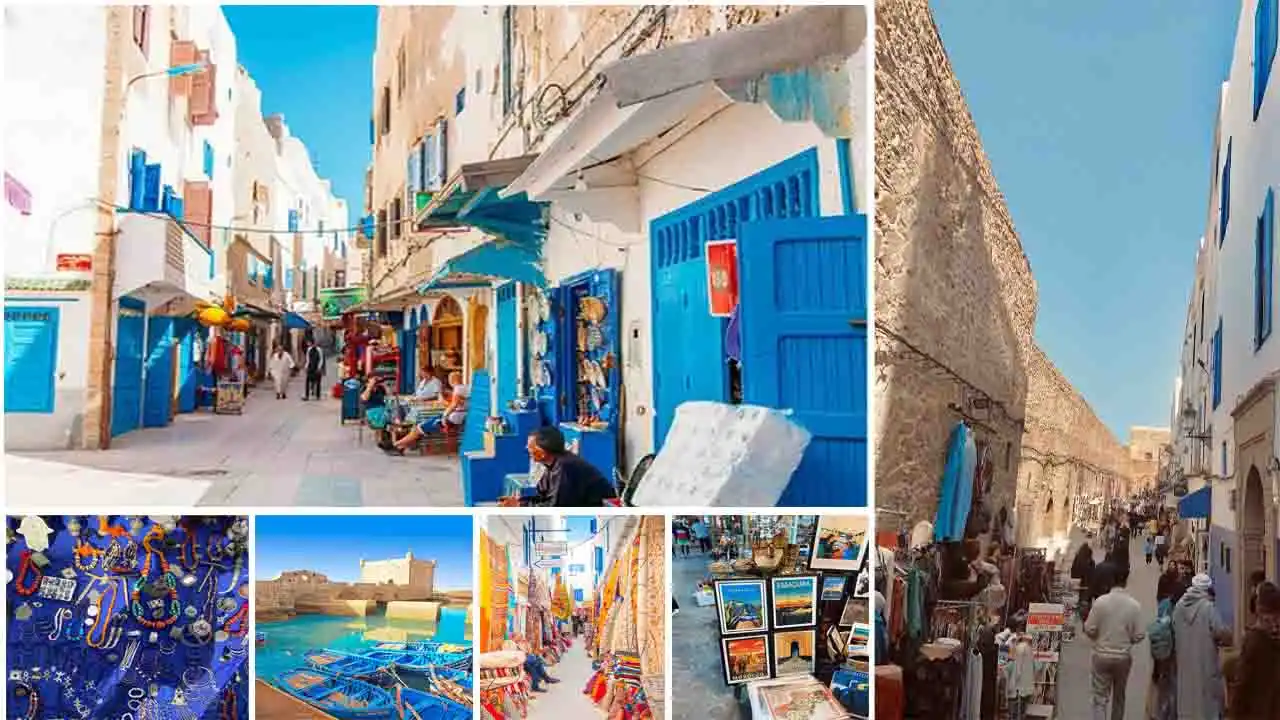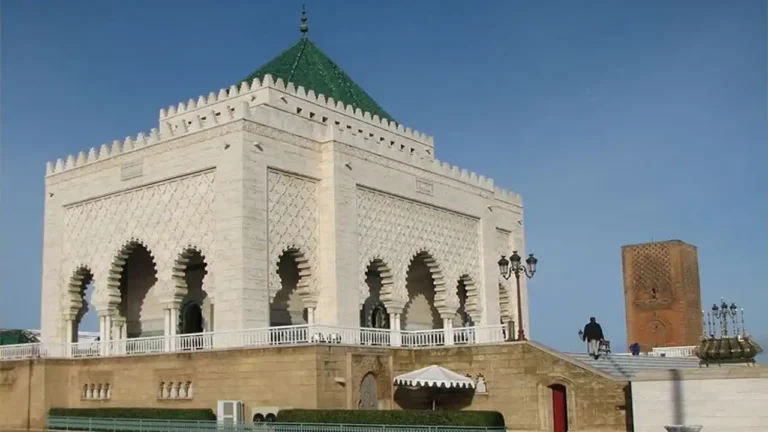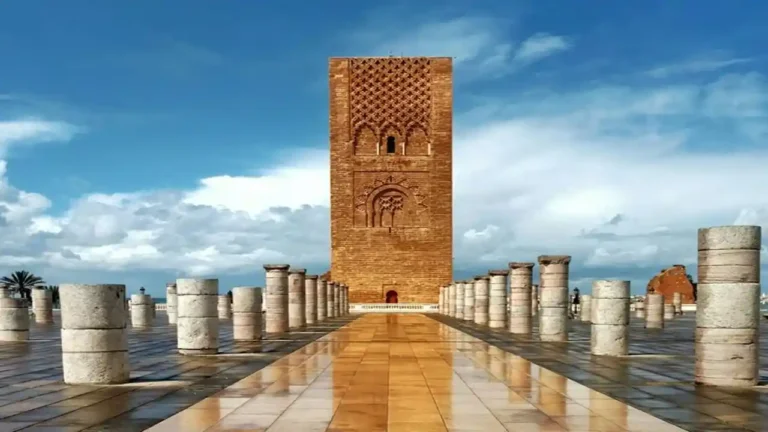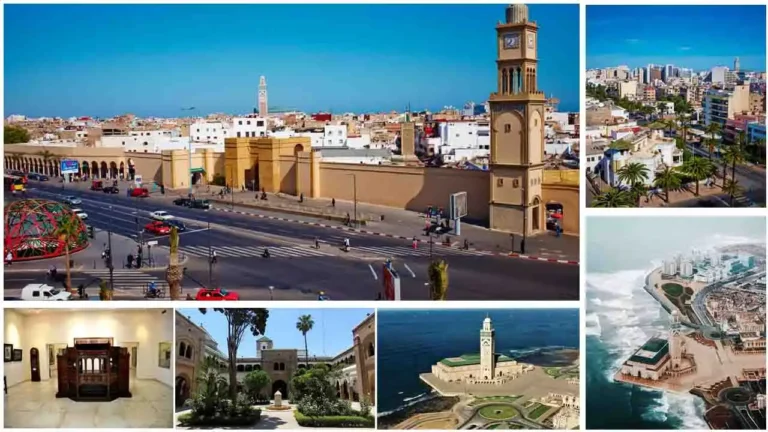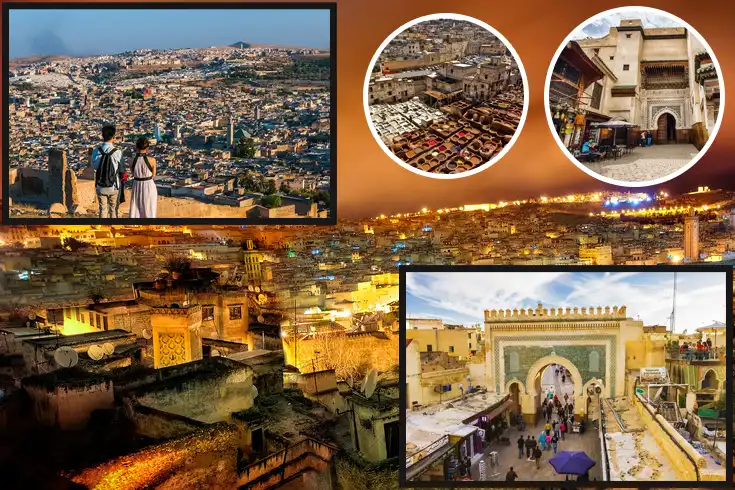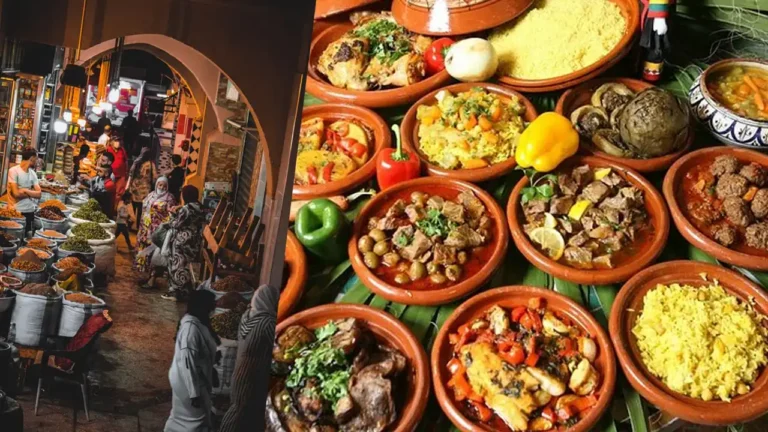Essaouira Medina | Dining into the Charming UNESCO-Listed Historic Center
The wind carries salt, the scent of cedar, the distant clang of a blacksmith’s hammer. Essaouira medina doesn’t just exist—it breathes. Enclosed by weathered stone walls, its labyrinth of white-and-blue alleyways whispers of pirates, sultans, and merchants who once made this port a gateway between Africa, Europe, and the New World.
Unlike Morocco’s frantic souks, Essaouira moves differently. No rushing, no shouting—just the steady rhythm of artisans chiseling thuya wood, silver merchants weighing filigree, and the call of seagulls circling above the Skala’s cannons. A UNESCO World Heritage Site, frozen in time, yet alive in every moment.
Step inside, and the past unravels. Traces of Berber, Arab, Jewish, and Portuguese hands remain—etched into the stone, painted onto the doors, whispered through the winding streets. This isn’t just a medina. It’s Essaouira’s soul.
Table of Contents
The History Behind Essaouira Medina
Essaouira wasn’t built by chance—it was engineered, crafted to command the waves and the world beyond them. In 1765, Sultan Mohammed Ben Abdallah envisioned a coastal stronghold, a city that would bridge Africa and Europe, securing Morocco’s place in the global trade routes. He brought in Théodore Cornut, a French architect, to carve order from the wild Atlantic—a grid-like medina unlike any other in Morocco.
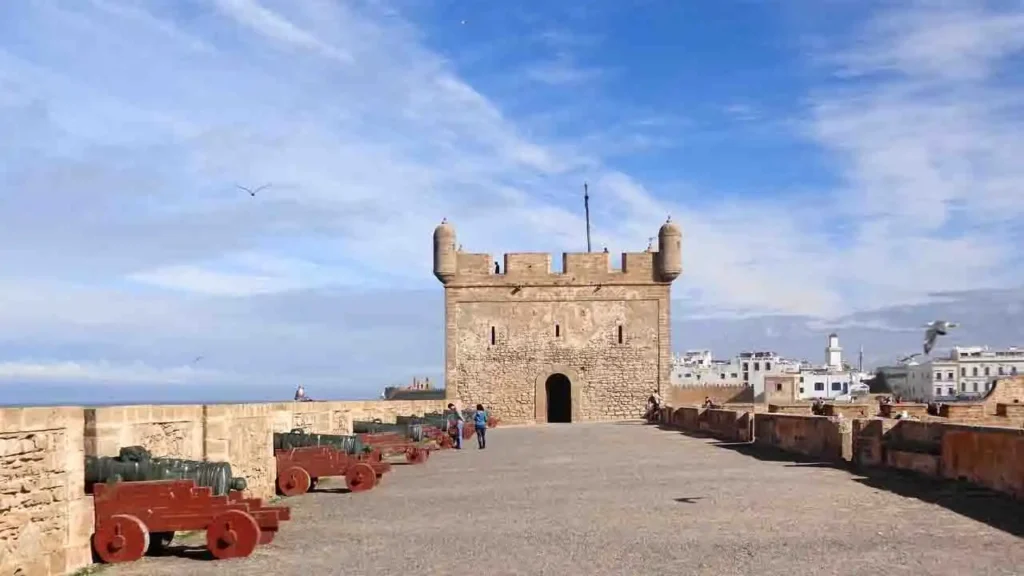
But Essaouira wasn’t just a sultan’s dream. It became a melting pot. Berber caravans arrived from the Sahara, their camels laden with gold, ivory, and salt. Jewish merchants—protected under royal decree—turned the city into a commercial hub, their Mellah (Jewish Quarter) buzzing with trade. The Portuguese had once tried to claim it, the Spanish had eyed it, and the British sought its riches, but Essaouira held firm, shaped by their presence but never conquered.
Today, those layers remain. The ramparts still stand, their cannons pointed toward a sea no longer threatening. The narrow streets still echo with the past, each turn revealing remnants of a time when Essaouira wasn’t just a city—it was a force.
Walking Through the Essaouira Medina’s Unique Architecture
Essaouira medina wasn’t built to be chaotic—it was designed to defy the wind, the waves, and time itself. Unlike the twisting, maze-like streets of Fes or Marrakech, this city follows a logical grid, a rare sight in Morocco’s ancient towns. French-inspired urban planning meets Moroccan soul, creating a space where every alleyway leads somewhere, and every doorway hides a story.

The walls rise thick and unyielding—fortifications built to keep out invaders and withstand the Atlantic’s relentless assault. Walk beneath the Bab el-Marsa gate, and you’ll hear the echo of centuries, the footsteps of traders, soldiers, and wanderers passing through its stone arch. Look up—blue shutters, weathered and sun-faded, peek out from whitewashed facades, a color palette dictated by the sea.
Then, there’s the Skala de la Ville—Essaouira’s great seawall, where bronze cannons still stand guard. From here, the ocean stretches infinite, the horizon blurred between past and present. The city unfolds beneath you—flat rooftops, hidden courtyards, and the soft hum of life moving at a different pace.
Essaouira’s architecture isn’t just beautiful. It’s a fortress. A map. A masterpiece shaped by the wind.
The Vibrant Souks: Shopping in the Medina
Essaouira’s souks don’t overwhelm. They invite. Unlike the chaotic maze of Marrakech, here you wander without pressure, without urgency—just the quiet pull of discovery.
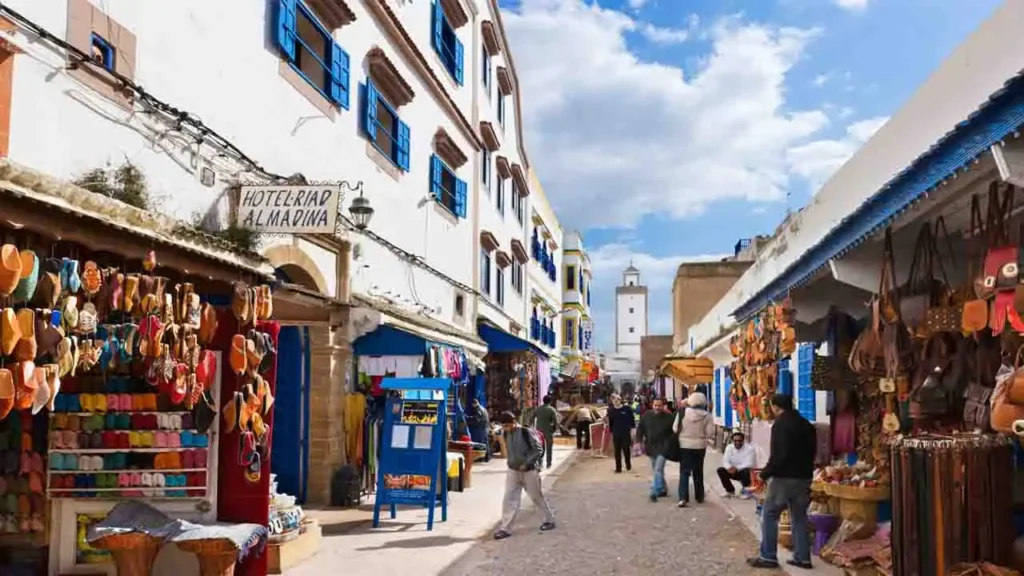
The scent of freshly ground cumin and dried roses drifts through the air. Thuya wood shavings curl under a craftsman’s steady hand, the rich, resinous scent filling his tiny workshop. Silver merchants polish intricate rings, their displays glinting in the filtered sunlight. There’s no shouting, no tugging at your sleeve—just a knowing nod, an unspoken invitation to look, to touch, to ask.
You run your fingers over a handwoven rug, its deep reds and blues telling a Berber story in threads. A vendor grins as he hands you a tiny vial of pure argan oil, the golden liquid catching the light. Nearby, a spice seller crushes a handful of herbs between his fingers—“Smell,” he says, “this is how you remember Essaouira.”
No rush. No stress. Just the simple pleasure of moving through a marketplace that feels more like a conversation than a transaction.
Essaouira’s souks aren’t just about what you buy. They’re about what you take with you.
The Cultural Side: Music, Art, and Daily Life
Essaouira doesn’t unfold in straight lines. It moves in loops, in echoes, in rhythms that belong more to wind and tide than to clocks or calendars. Time here is measured in the scratch of a painter’s brush, the deep murmur of a guembri, the slow swirl of mint in a glass of steaming tea.
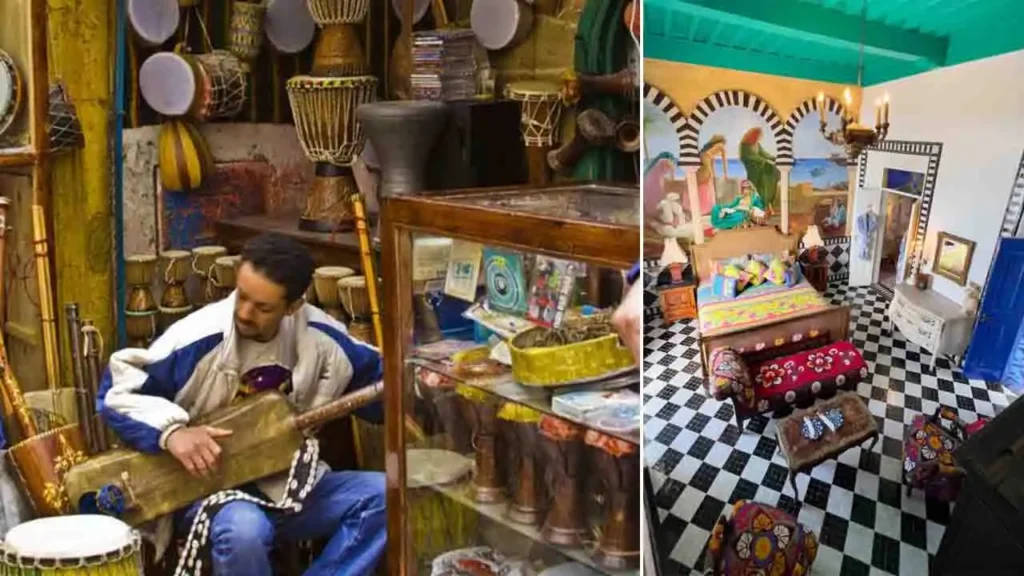
Music isn’t played—it rises. A Gnawa musician sits cross-legged in a dimly lit room, fingers dancing over the guembri’s strings, eyes closed, lost in something ancient. The krakebs rattle—sharp, metallic, relentless. The air vibrates. This isn’t a performance. It’s a ritual. A doorway. A spell.
Outside, colors spill from canvas to wall to sky. Galeries hide behind blue wooden doors, their insides bursting with movement—paintings that pulse with Essaouira’s winds, sculptures that look like they could wake and walk. In a tiny workshop, a man carves thuya wood, his hands moving like they’ve done this for a thousand years.
Then, the quiet moments. A fisherman repairing his net in the golden light. A woman disappearing into a shadowed alley, her hands dusted with flour. The scent of bread drifting from a nameless doorway. A cat watching the world from a rooftop, unblinking, unbothered.
Essaouira doesn’t put on a show. It just exists—raw, unfiltered, waiting for you to notice.
Hidden Gems Inside the Medina
Essaouira’s medina doesn’t give up its secrets easily. The real magic isn’t in the souks or the ramparts—it’s in the quiet places, the in-between spaces, the stories hidden in plain sight.
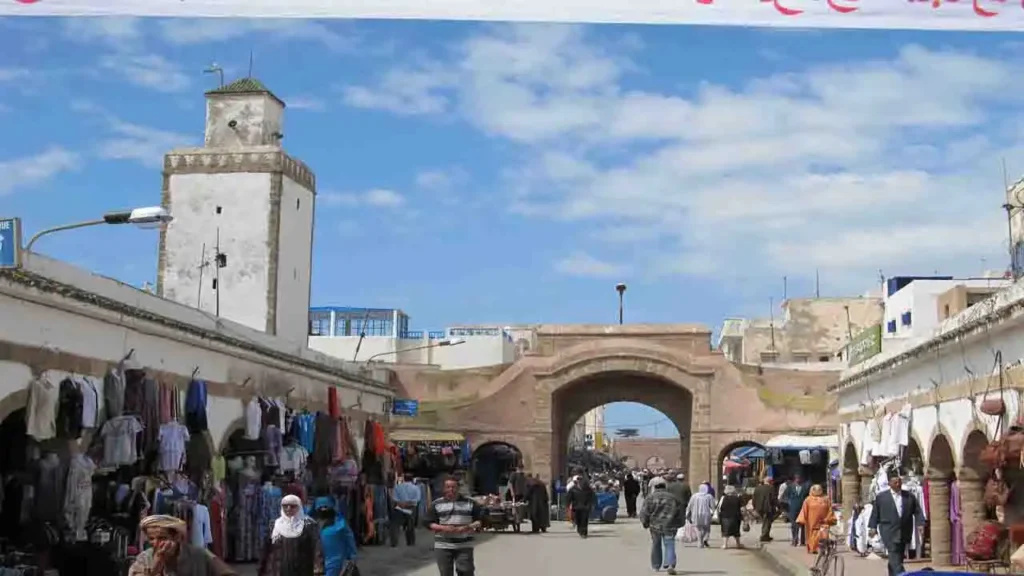
A side street, half in shadow, half in sun. No signs, no tourists. Just a tiny blue door, slightly ajar. Step inside, and the air changes—cool, thick with the scent of cedar and time. This is a forgotten synagogue, its walls whispering prayers that haven’t been spoken in years. A few dust-covered benches. A book left open, as if someone might return.
Further in, the alleys narrow. The sounds of the medina soften. A craftsman hunches over a small wooden box, carving delicate geometric patterns into thuya, his movements slow, deliberate. He doesn’t look up—his hands know the work better than his eyes. Across from him, an antique dealer arranges old silver trays, some tarnished, some gleaming—pieces that have passed through generations, still waiting for their next owner.
Somewhere, a staircase leads to a rooftop. No signs, no guide—just instinct. You climb, the walls tightening around you, until—sky. The medina sprawls beneath you, a maze of rooftops and satellite dishes, the ocean stretching beyond. Seagulls drift lazily above the Skala, the wind carries the scent of salt and saffron.
The best parts of Essaouira? You won’t find them on a map. You have to get lost.
Essaouira’s medina isn’t just a place you explore—it’s a place that lingers. A city of wind and waves, stone and salt, stories etched into its walls, carried in the scent of cedar, woven into the rhythm of Gnawa drums.
You’ve walked its ramparts, wandered its souks, lost yourself in hidden alleyways where history isn’t just remembered—it’s felt. The blue-shuttered windows, the calloused hands of artisans, the quiet hum of a city that never forces itself upon you—Essaouira moves at its own pace, and if you listen, it lets you move with it.
Some places impress you. Essaouira possesses you. And long after you leave, you’ll catch a scent, hear a sound, feel the wind shift just right—and for a moment, you’ll be back.
